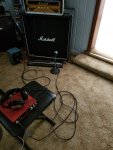'To find the world’s most sinister examples of mind control, don’t look to science fiction. Instead, go to a tropical country like Brazil, and venture deep into the jungle. Find a leaf that’s hanging almost exactly 25 centimeters above the forest floor, no more and no less. Now look underneath it. If you’re in luck, you might find an ant clinging to the leaf’s central vein, jaws clamped tight for dear life. But this ant’s life is already over. And its body belongs to Ophiocordyceps unilateralis, the zombie-ant fungus.
When the fungus infects a carpenter ant, it grows through the insect’s body, draining it of nutrients and hijacking its mind. Over the course of a week, it compels the ant to leave the safety of its nest and ascend a nearby plant stem. It stops the ant at a height of 25 centimeters—a zone with precisely the right temperature and humidity for the fungus to grow. It forces the ant to permanently lock its mandibles around a leaf. Eventually, it sends a long stalk through the ant’s head, growing into a bulbous capsule full of spores. And because the ant typically climbs a leaf that overhangs its colony’s foraging trails, the fungal spores rain down onto its sisters below, zombifying them in turn.'
I want to be a zombie ant , ya know? Whos with me?


